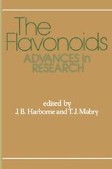Search
Search Results
-
In vitro antioxidant properties of the biflavonoid agathisflavone
PurposeFree radicals are considered as the causative agents of a variety of acute and chronic pathologies. Natural antioxidants have drawn attention...

-
Multiple spectroscopic fingerprinting platforms for rapid characterization of α-glucosidase inhibitors and antioxidants from some commonly consumed Indonesian vegetables and spices
Indonesia has one of the most significant biodiversity in the world. Many edible plants have served as the sources of bioactive compounds such as...

-
Evaluation of Phenolic Constituents and Toxicity of Lycophytes and Ferns of Shervarayan Hills Aqueous Extracts
The present study was aimed to reveal the phenolic composition and toxicity of Shervarayan Hill lycophytes and ferns aqueous extracts. The total...

-
Optimization of Polyphenols Recovery from Schinus molle L. Peel Using Response Surface Methodology (RSM)
Factorial design and Response Surface Methodology (RSM) were used to model the recovery of polyphenols from Schinus molle L. peel (SM) by solvent...

-
Phytochemical analysis, neuroprotective, anticholinesterase, cytotoxic and catalase potentials of Opuntia microdasys var. rufida and Opuntia leptocaulis
A series of organic extracts obtained from spines, flowers, roots and fruits of two Tunisian species of Opuntia , O. microdasys var . rufida (OMR) and O....

-
Recent progress on drugs discovery study for treatment of COVID-19: repurposing existing drugs and current natural bioactive molecules
COVID-19 has been a major global health concern for the past three years, and currently we are still experiencing coronavirus patients in the...

-
Neurotrophic Natural Products
Neurotrophins (NGF, BDNF, NT3, NT4) can decrease cell death, induce differentiation, as well as sustain the structure and function of neurons, which...
-
Classification of Medicinal Plants Showing Anti-Viral Activity, Classified by Family and Viral Infection Types
Surprisingly little overlap has been found in the studies of the several hundred plant and herb species with promise as new anti-viral medicines....
-
Classification of Medicinal Plants Showing Antiviral Activity, Classified by Family and Viral Infection Types
Surprisingly little overlap has been found in the studies of the several hundred plant and herb species with promise as new antiviral medicines....
-
Canarium album (Lour.) Raeusch. 青果 (Qingguo, Chinese Olive)
(Lour.) Raeusch., called Qingguo in Chinese and known as the Chinese olive tree (normally called Ganlan in China), is an evergreen tree in the...
-
Flavonoids from the fruits of Nepalese sumac (Rhus parviflora) attenuate glutamate-induced neurotoxicity in HT22 cells
Nepalese sumac ( Rhus parviflora ) is a wild edible fruit used for the treatment of various ailments including neurological complications and stomach...
-
Cytotoxic and neuroprotective biflavonoids from the fruit of Rhus parviflora
Six biflavonoids, succedaneaflavanone ( 1 ), mesuaferrone B ( 2 ), rhusflavanone ( 3 ), rhusflavone ( 4 ), agathisflavone ( 5 ), and cupressuflavone ( 6 ), were...
-
Biological Activities of Extracts from Sumac (Rhus spp.): A Review
Sumac is the common name for a genus ( Rhus ) that contains over 250 individual species of flowering plants in the family Anacardiaceae. These plants...

-
On the liquid chromatography and identification of the flavonoids, present in the “sumach tannic acid” extracted fromRhus coriaria
The leaves of Rhus coriaria contain about 15–20% polyphenolic compounds. These are mostly hydrolysable tannins, with a central glucose unit, to which...
-
Biflavonoids
It is only five years since the present authors reviewed the biflavonoids (Geiger and Quinn, 1975). The number of new compounds found during the...
-
Carbon-13 NMR Spectroscopy of Flavonoids
Carbon-13 with a natural abundance of only 1.1% and a smaller magnetic moment than 1H (and hence a weaker NMR signal) was for many years a nucleus...
-
The Chemistry of Biflavanoid Compounds
As constituents of plants, flavanoids are amongst the most frequently encountered natural products. Since interest in flavanoids as a class of...
